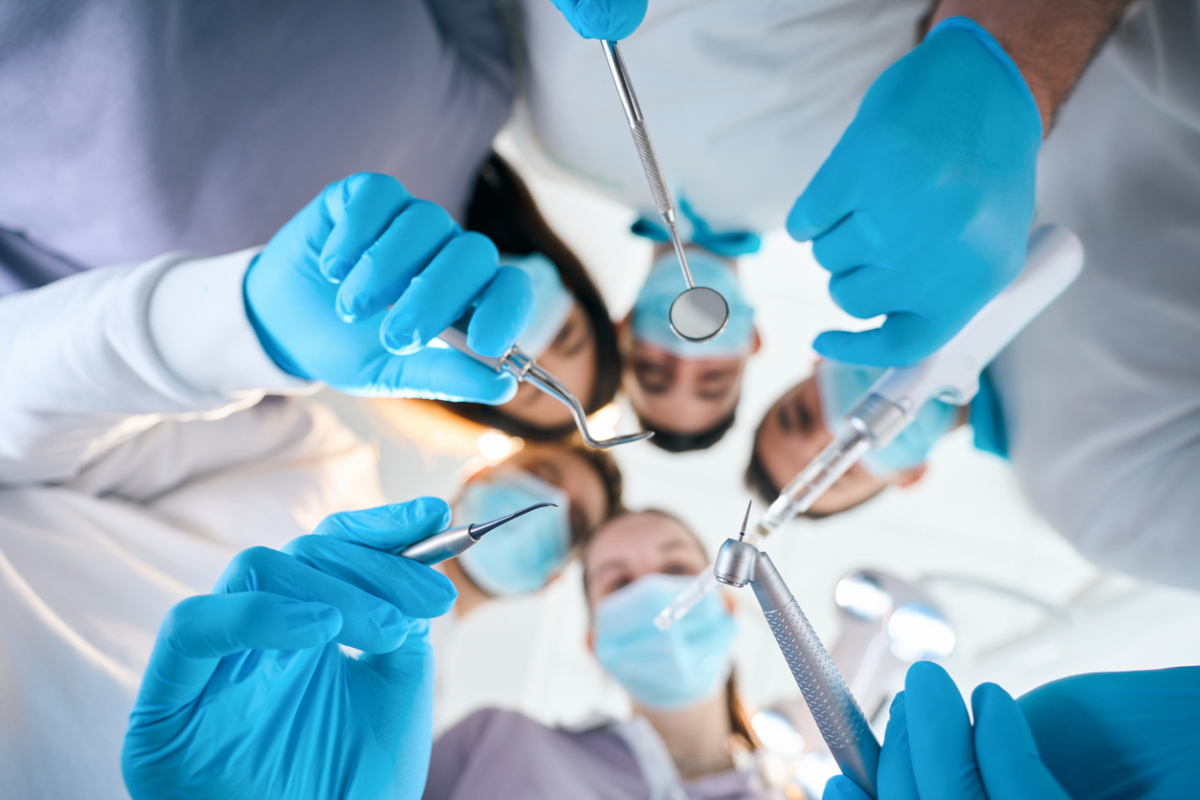If you experience anxiety due to the upcoming dental procedure or have other special needs, sedation dentistry can make your procedure much more comfortable. In this article, we discuss sedation options used in dentistry and address the question: Can you request to be put to sleep at the dentist?
Can You Request to Be Put to Sleep at the Dentist?
When we talk about being put to sleep, we usually mean general anesthesia—an unconscious type of sedation. General anesthesia can only be administered by a qualified professional, taking into account the patient’s prior heart health test results. Thus, not every dental office offers this type of sedation, and in fact, in most cases, it is unnecessary and can be effectively replaced with milder options.
While you can request to be put to sleep at the dentist, since general anesthesia puts a strain on the body by slowing down brain activity, it is typically employed in dentistry only in the following cases:
- Lengthy and complicated oral surgeries when a patient has to remain in the same position for a long time (for example, in case of a severe oral trauma).
- For patients with special needs who might find it challenging to remain in one position for the duration of the procedure or to cooperate with their doctor.
- For patients with severe dental anxiety that prevents them from undergoing the procedure otherwise.
If you require general anesthesia for your procedure, consult with your doctor so that you can prepare for it properly. If your doctor decides that the procedure you are undergoing does not require general anesthesia, you still have other effective options that will help make your experience as comfortable as possible. We examine the most common sedation options used in dentistry below, so you can know which options are available to you.
Other Options of Sedation Used in Dentistry
As we mentioned above, general anesthesia is a type of unconscious sedation. The other types of sedation are conscious, meaning that they will have a calming effect only, inducing drowsiness but not a state of complete unconsciousness.
- IV (Intravenous) sedation is the closest option in its effect to general anesthesia. It is the strongest type of conscious sedation, which is likely to make you drowsy or fall asleep during the procedure. Additionally, patients often have little recollection of the procedure afterward. However, you will be able to wake up easily and cooperate with your doctor if needed.
- Oral sedation comes in the form of a pill (usually a benzodiazepine) taken by mouth some time before the procedure. It has a calming and relaxing effect. Patients often report feeling calm, sleepy, or even slightly euphoric and having slowed thoughts and movements. In some cases, partial memory loss of the procedure might also occur.
- Nitrous oxide (also known as laughing gas) is the mildest form of sedation used in dentistry and is often used for children as well. With this option, you will be fully awake but relaxed. Some patients also report feeling slightly euphoric or “detached”.
Typically, these types of sedation are used in combination with a local anesthetic, which blocks the pain. Thus, even though you may not be fully asleep during the procedure, it will be comfortable and painless. Consult your dentist to learn about sedation options they provide.
Get a Stress-free Dental Procedure at Maz Endodontics
Do not hesitate to make an appointment with the team of friendly and reliable dentists at Maz Endodontics today. At our dental office, we utilize modern methods and techniques to ensure our patients’ comfort during their treatments. We sincerely look forward to your visit.

